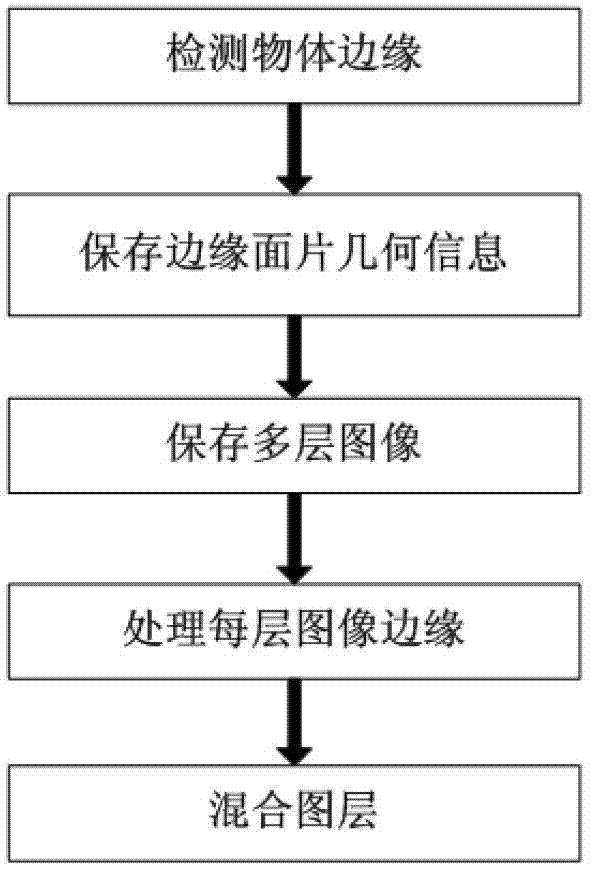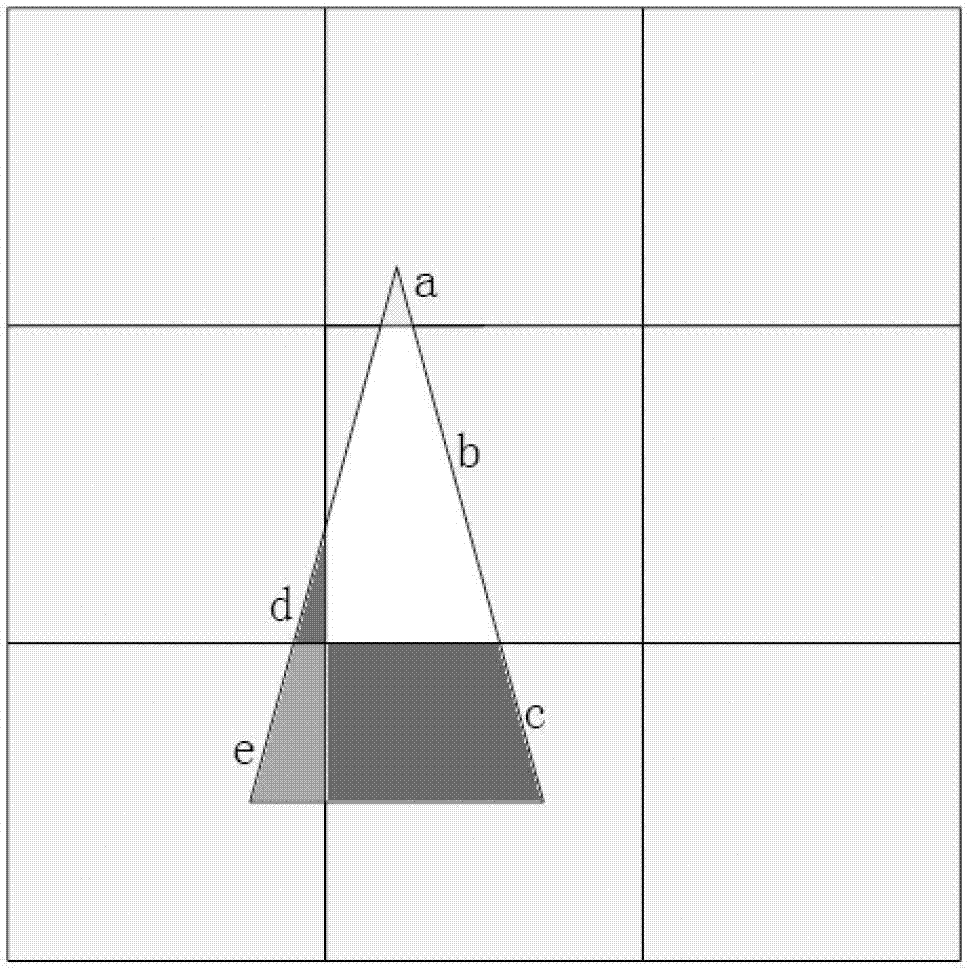Movie post-synthesis anti-aliasing method
A post-synthesis and anti-aliasing technology, which is applied in the direction of instrumentation, computing, and 3D image processing, can solve problems such as aliasing and low resolution, and achieve the effect of reducing aliasing distortion
- Summary
- Abstract
- Description
- Claims
- Application Information
AI Technical Summary
Problems solved by technology
Method used
Image
Examples
Embodiment Construction
[0031] Such as figure 1 As shown, a film post-synthesis anti-aliasing method includes the following steps:
[0032] 1) For the 3D model to be rendered in each frame, use ray tracing to render the 3D model using the lighting model and given material information to obtain a multi-layer image corresponding to the lighting model, and The boundary corresponding to the 3D model in the layer image;
[0033] In step 1), when ray tracing is used to render the 3D model, the obtained layered image includes ambient color layer, diffuse reflection layer, highlight layer, shadow layer, etc. For the outgoing rays of the pixel, if the outgoing rays of the two intersect the 3D model in different material areas, it is considered that the pixel in the image of this layer is at the boundary of the 3D model. Repeat the above method until all layers are traversed, and each layer can be obtained The boundary corresponding to the 3D model in the image.
[0034] 2) According to the 3D model, obtain...
PUM
 Login to View More
Login to View More Abstract
Description
Claims
Application Information
 Login to View More
Login to View More - R&D
- Intellectual Property
- Life Sciences
- Materials
- Tech Scout
- Unparalleled Data Quality
- Higher Quality Content
- 60% Fewer Hallucinations
Browse by: Latest US Patents, China's latest patents, Technical Efficacy Thesaurus, Application Domain, Technology Topic, Popular Technical Reports.
© 2025 PatSnap. All rights reserved.Legal|Privacy policy|Modern Slavery Act Transparency Statement|Sitemap|About US| Contact US: help@patsnap.com



